February 12, 2011
Fields
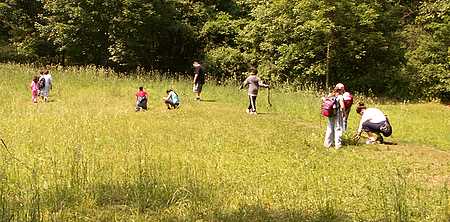
Fourth graders spread out to find snakes, toads, insects, spiders, plants and other field dwellers.
To find and capture animals in the field requires a keen eye and quick reflexes. Garter snakes, which have been caught in abundance this year, are shy creatures and fast movers. Anyone who has tried to catch butterflies knows that even with a net it can be a frustrating exercise. And many of the other insects and spiders are camouflaged and are skilled at hiding in the deep grass. But 4th graders are quick too.
The field helps demonstrate the interaction among habitats through some of its creatures. The students know that many of the creatures found in the field start out in the pond: the dragonfly, the damselfly, and the toad are the most prominent examples. They also know that the basic outline of the food chain is the same -- plants, which they also collect, are producers, and the animals are either consumers or decomposers. And though fungi, moss and lichen are usually associated with the forest, where they help break down organic and inorganic materials to produce soil, all three can also be found in the field or around its edges.
Following the same practice used at the pond, the specimens of each group are collected and displayed for all the students to see what has been found before everything is put back where it came from. Then, of course, it's time for lunch.
There are a variety of after-lunch activities for the ECOS staff to choose from. The web game, illustrated in this section, is one of them, designed to get the students to make connections among randomly chosen members of the three groups in the food chain and inorganic elements.
Then it's off to the bubblegum tree ... 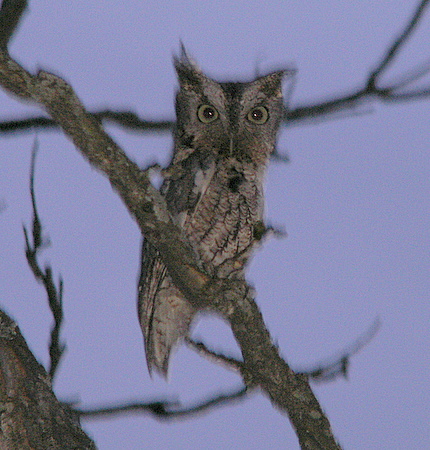
April morning, a beautiful day at ECOS.
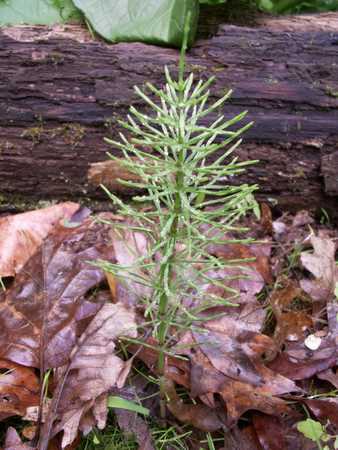
The Horsetail is a living relic from over 300 million years ago, the only member of its plant family still in existence. It can be found just about anywhere in the park where there is moist soil, so in the field habitat it is most often found near wooded edges. This plant is about 5 inches tall, but its ancestors grew up to 100 feet tall.
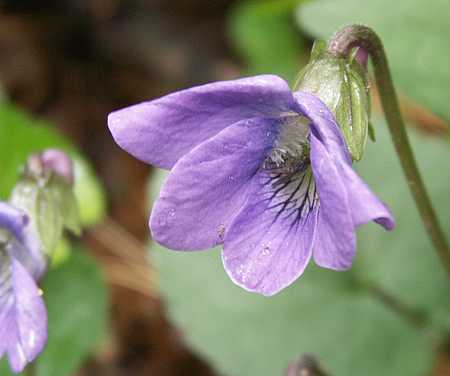
Violets of many varities also grow all around the park, most being able to grow in wet, shady areas as well as drier, grassy land. Most flower from early to late spring.
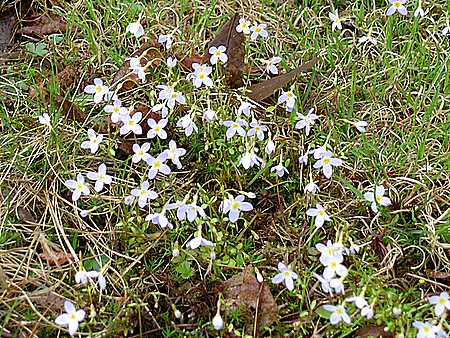
Bluets are tiny flowering plants that bloom for a short time in mid spring. They get their name from the bluish tinge of the white flowers.
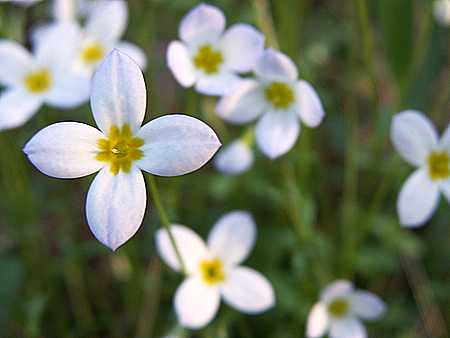
A close-up of the Bluet.
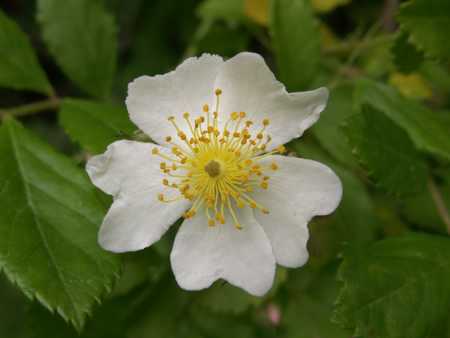
Wild roses hug the edges of the field, often climbing over bushes to catch the sunlight. They flower in mid-spring. This one has a sweet scent.
The fruits the rose are called rose hips.
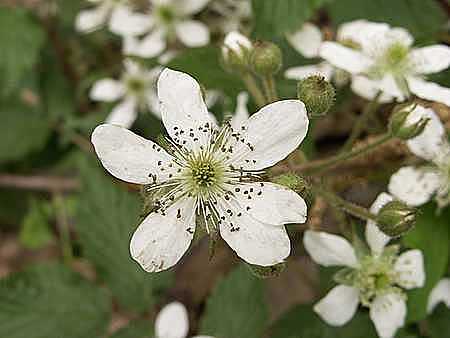
The Blackberry also grows at the edges of the field.
Blue-Eyed Grass has a tiny flower that only opens for one day in the morning on a sunny day. It is found in the field and in marshes.
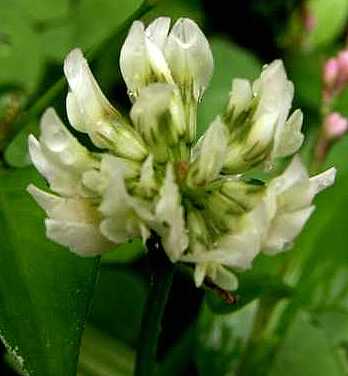
White Clover is a major source of nectar for bees and other insects. It has a cluster of three leaves. Finding one with four leaves is considered a sign of good luck.
The Common Buttercup is sometimes called the "Tall Buttercup" because the flower stalk grows up to 2 feet high. It blooms in fields from May through August.
Tall Meadow Rue grows in fields, usually near the wood's edge, and in swampy areas.
Black-Eyed Susan blooms in fields from June to September. It is common to see varieties of this flower in gardens.
The old saying about Poison Ivy -- "leaves of three, let them be" -- is sound advice. Touching any part of this plant, which sometimes grows as a vine, will cause severe skin inflammation.
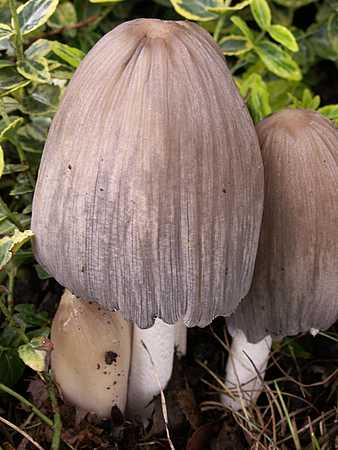
Mushrooms often appear suddenly in fields after soaking rains. This mushroom is called an Alcohol Inky, partially named for its dark black underside, where it carries its spores.
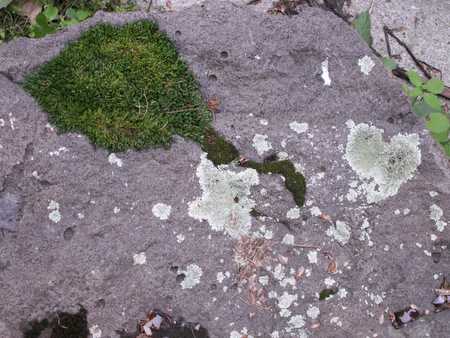
Moss and lichen (the light green patches), like mushrooms, are most often associated with wooded areas but are also present in the field. Moss helps to decompose rock into the sand that makes up part of soil through the action of the water it absorbs. In winter the water freezes in little cracks in the rock, causing the cracks to widen. Lichens, through the action of acid that it uses to create tiny holes for gripping, also act as decomposers of rocks.
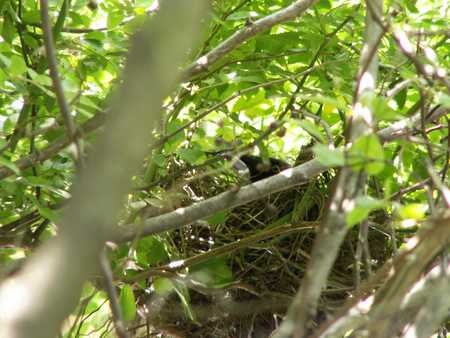
The American Robin most often nests near fields. The whitish rim around the eye identifies this bird in its nest...
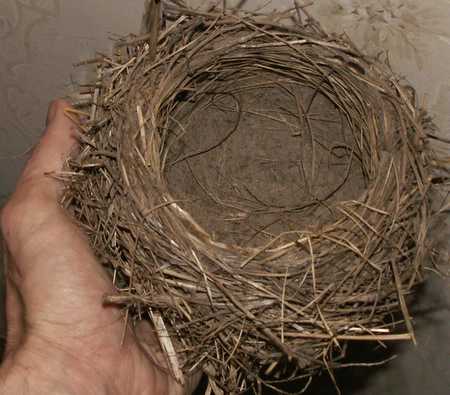
...which it builds using mud to hold together grasses and small twigs.
The American Robin specializes in catching earthworms from spring through summer. In the fall and winter, it eats berries.
The male House Sparrow. This 6-inch bird is a European import which has made itself at home in parks and in backyards, often being the biggest eater at bird feeders. It is also known to kill nestlings and remove eggs of other birds in birdhouses. The female is mostly pale brown on top with some black streaks, and dusky below.
The Mourning Dove gets its name from its mournful call. It eats mostly seeds.
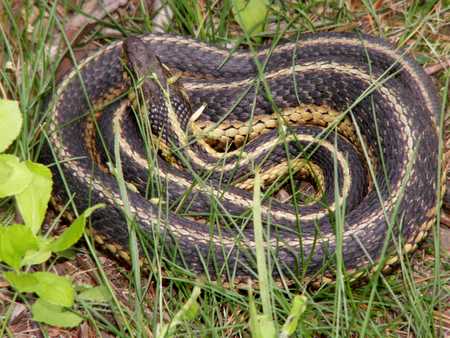
An adult Garter Snake, approximately two feet long. They are named after the straps men used to wear to hold up their stockings. They are not poisonous and are easy to handle.
Ms. Orellana holds a young Ring-Necked Snake caught by her class. The snake can grow up to a foot long and constricts itself around its prey -- earthworms, frogs, and salamanders.
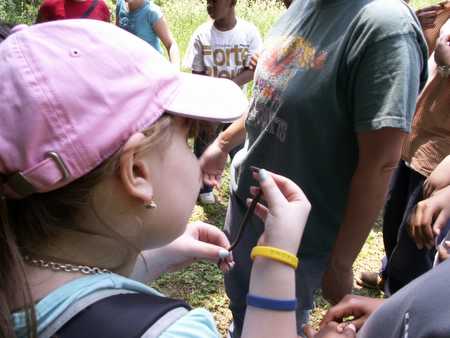
A student holds a young Garter Snake, discovering that its skin is not slimy, but feels dry and only slightly scaly.
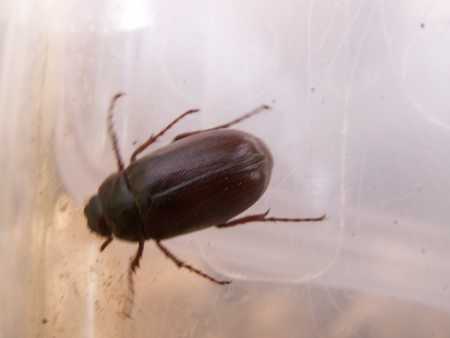
A beetle commonly found in the field.
The Woolly Bear Caterpillar is often seen crossing roads and trails in late fall before going into hibernation. It will often roll itself into a ball if touched.
A female Cabbage White butterfly. The male has only one spot on its forewing.
The American Lady butterfly's habitat is fields and gardens.
The underside of the wings of an American Lady butterfly.
The Great Spangled Fritillary is another butterfly that likes fields and gardens.
The Great Spangled Fritillary with its wings open.
The Eastern Tiger Swallowtail prefers open woods and fields.
Side view of the Eastern Tiger Swallowtail.
Monarch butterflies were seen in abundance around Forest Park and in gardens this summer and fall.
Side view of the Monarch butterfly.
The Silver-Spotted Skipper is an aggressive butterfly that will often chase others away.
A Peck's Skipper butterfly.
The American Copper butterfly, about half the size of the Monarch, is usually found in dry fields.
The Summer Azure butterfly gets its name from the color of the tops of its wings -- "azure" being the color of the cloudless sky.
This butterfly is called the Eastern Comma because of the small, curved silver line on its hind underwing. This one has a grey underside, but there are Eastern Commas whose undersides are orange -- an example of variation in nature that can occur within one species.
The Eastern Comma butterfly with its wings open.
This is a hybrid, meaning that it is the offspring of two distinct varieties of butterfly -- the White Admiral, whose territory reaches farther north, and the Red-spotted Purple, whose territory is more to the south. As a result of the interbreeding, this hybrid shares a few characteristics from each of its parents.

Photo by Peter Doran
The Hummingbird Clearwing Moth is often confused with the bird when spotted in gardens and fields. Though smaller, the moth sips nectar from the same types of flowers, and both the moth and the bird are able to hover in the air with wings that beat at high speeds.
Katydids can be found in fields near broadleaf forests where they live. Their wings mimic the color and veined pattern of leaves, making them less visible to predators.
The Praying Mantis captures other insects with its two powerful "praying" forelegs. It has large eyes and one of the most flexible necks of any insect, enabling it to hunt prey and look out for danger at almost all angles. Its habitat is fields and gardens.
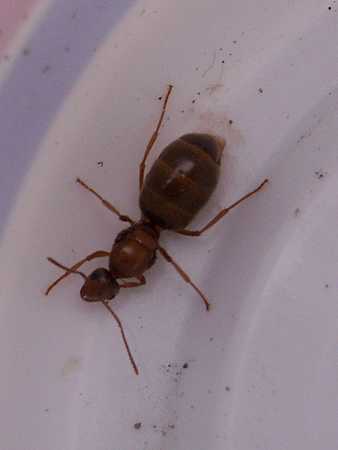
A large reddish ant.
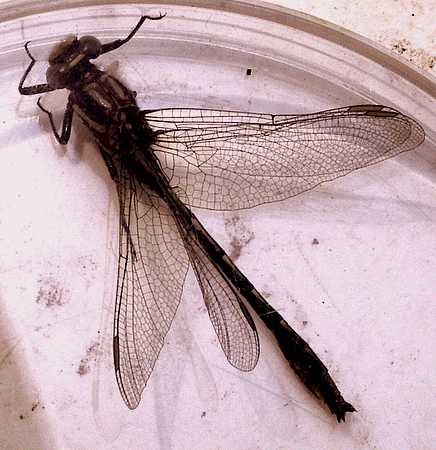
When dragonflies were nymphs in the pond they hunted smaller insects. The adult dragonfly seeks its prey flying above the field. This is an Eastern Pondhawk dragonfly.
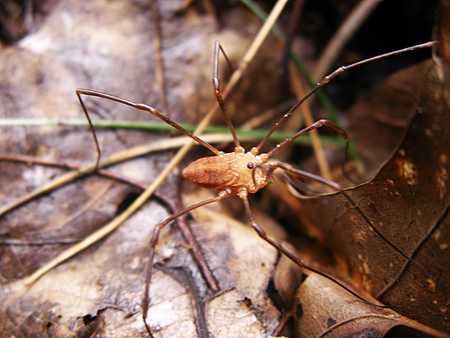
A daddy long legs is aply named -- its legs can be many times as long as its body. It can be found in the forest, field and in your backyard.
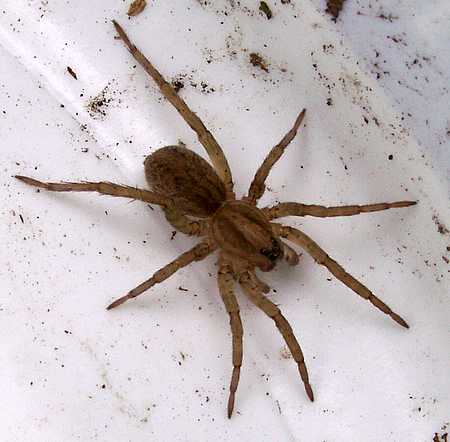
The Wolf Spider, greatly enlarged in this photograph, is also carnivorous, but it is not an insect, which has six legs, but an arachnid, which has eight.
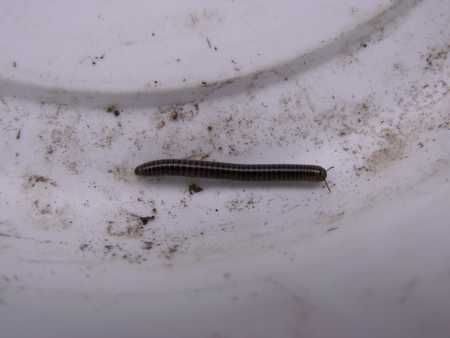
Millipedes are common to the forest and field habitats. They eat plant material.
Two Centipedes of different size and color. Variation among related organisms is something the students take note of when examining the day's catch.
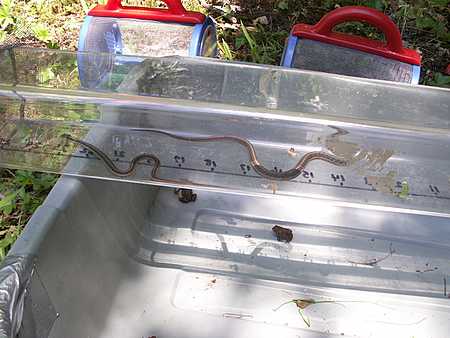
The Garter Snakes caught by this class are put in a special holding tube so they can be measured. These young snakes were six inches and eight inches long.
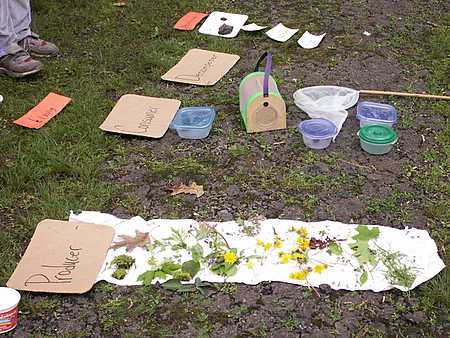
As the class brings specimens to the ECOS teacher, they are identified and sorted into inorganic, producer, consumer and decomposer.
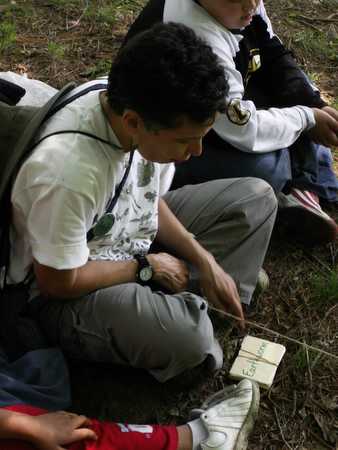
Ms. Martinez leads a game which illustrates the interconnections of these groups.
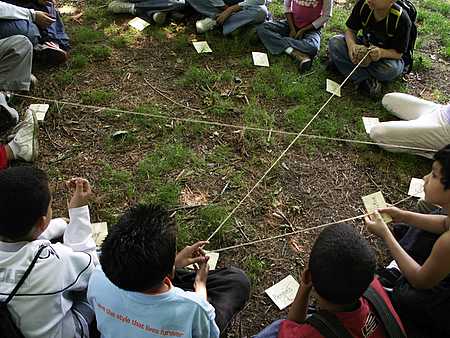
Ms. Martinez throws a ball of twine to a student, each of whom has been assigned to play the role of a producer, consumer, decomposer or inorganic substance. The student holds on to the string and throws the ball it at random on to the next student, who must say how the two elements of the environment are connected.
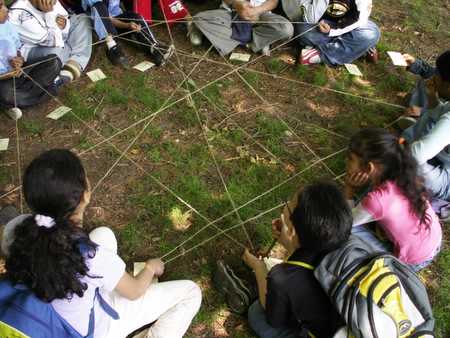
The game is done when the web of interconnections is completed, reinforcing the idea that no one part of the environment is separate from another.
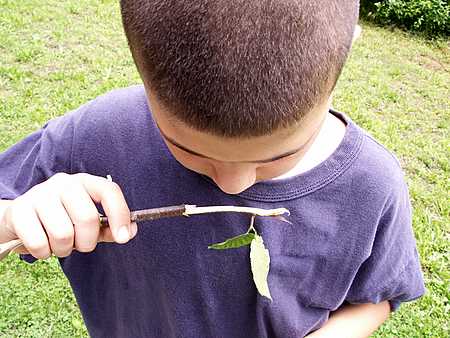
At the end of their last day at ECOS, every fourth grader gets what they've been eagerly anticipating -- a piece of "The Bubblegum Tree." Its real name is Black Birch or Sweet Birch. Its nickname comes from the delicious smell of chewing gum it gives off when the bark of a sapling twig is stripped off. They take their twigs with them and head back to school from ECOS till next year.
Posted by mpdoran at February 12, 2011 12:29 AM